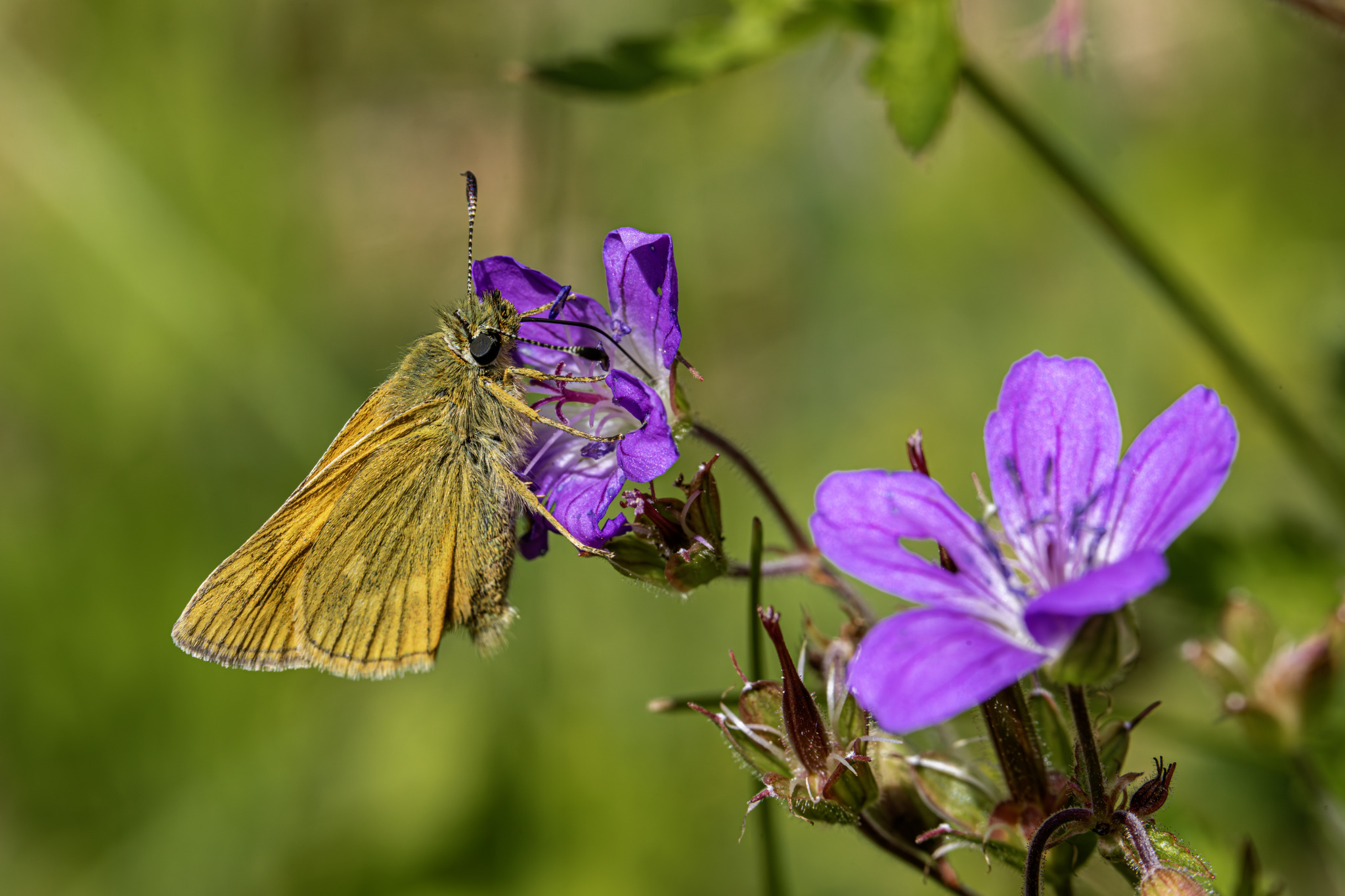The Large Skipper (Ochlodes sylvanus) is a common butterfly found across Europe and parts of Asia. It belongs to the family Hesperiidae and is known for its robust body, rapid flight, and distinctive wing markings. Here’s an overview of this butterfly species:
Appearance:
- Size: The wingspan ranges from 25 to 30 millimeters.
- Coloration: The upper side of the wings is a rich orange-brown with darker brown markings. The forewings have a characteristic pattern of small dark spots.
- Undersides: The undersides of the hindwings are pale yellow-brown with faint, irregular white spots, providing effective camouflage when at rest.
Habitat:
- Preferred Habitats: Large Skippers are typically found in grasslands, meadows, woodland edges, and clearings. They prefer areas with tall grasses and abundant wildflowers.
- Geographic Range: This species is widely distributed across Europe, extending into North Africa and parts of Asia, including temperate regions of China and Japan.
Behavior:
- Feeding: Adults feed on nectar from a variety of flowers, including thistles, knapweeds, and brambles. They are particularly attracted to purple and pink flowers.
- Flight: Large Skippers have a fast and darting flight pattern, often flying low to the ground. They are active from late May to August, depending on the climate of the region.
- Basking: These butterflies often bask in the sun with their wings partially open, a behavior that helps regulate their body temperature.
Life Cycle:
- Eggs: Females lay single eggs on the underside of grass blades. The eggs are white initially, turning yellowish before hatching.
- Larvae: The caterpillars are green with a dark stripe along the back and pale stripes along the sides. They have a characteristic large head. Larvae feed on grasses such as cock’s-foot (Dactylis glomerata), purple moor-grass (Molinia caerulea), and false brome (Brachypodium sylvaticum).
- Pupation: The larvae create shelters by folding or rolling grass blades together with silk, where they later pupate. The pupa is green or brown, often well-camouflaged within the grass.
- Adults: After pupation, adults emerge in the late spring and early summer to mate and continue the life cycle.
Ecological Role:
- Pollination: As nectar feeders, Large Skippers contribute to the pollination of various wildflowers.
- Food Web: Larvae and adults are prey for birds, spiders, and other predators, playing a crucial role in the ecosystem’s food web.
Conservation Status:
- Population: The Large Skipper is not considered threatened and is common within its range. It benefits from diverse grassland habitats.
- Threats: Habitat loss due to agricultural practices, urban development, and changes in land management can impact local populations. Conservation of grassland habitats is vital for their continued presence.
Interesting Facts:
- Common Name: The name “Large Skipper” refers to its relatively larger size compared to other skippers in the region.
- Behavioral Traits: These butterflies are territorial and often return to the same perch after being disturbed.
- Winter Survival: The species overwinters as larvae within their grass shelters, emerging in the spring to complete their development.
In summary, the Large Skipper (Ochlodes sylvanus) is a widespread and ecologically important butterfly species. Its presence in various habitats across Europe and Asia highlights its adaptability and role in pollination and the food web. Conservation efforts that focus on preserving grassland habitats will help ensure the continued success of this vibrant butterfly species.
Visited 873 times, 2 visit(s) today
Views: 1501
Subscribe to the newsletter:
